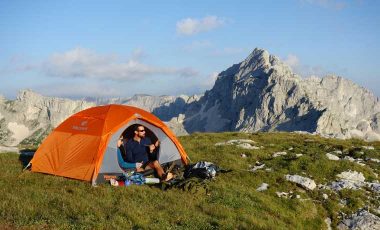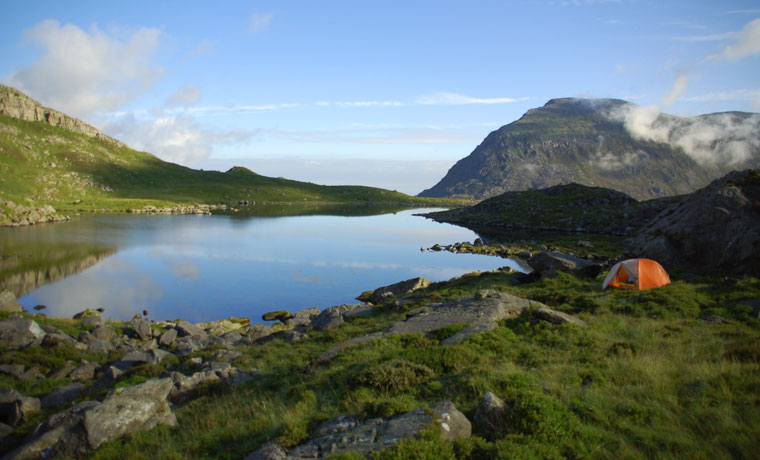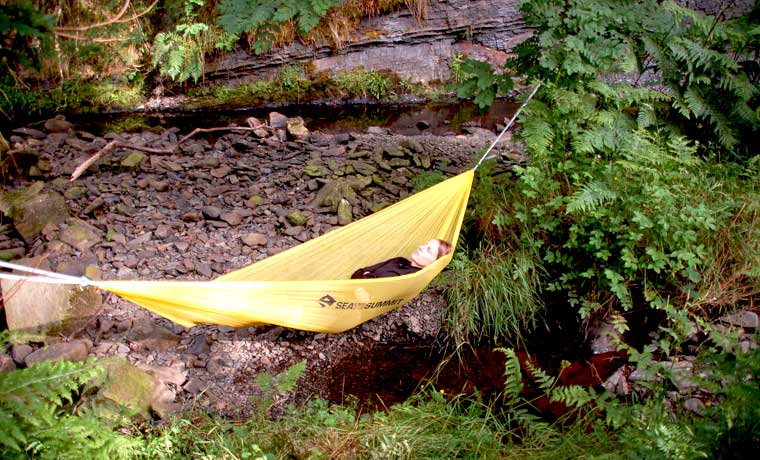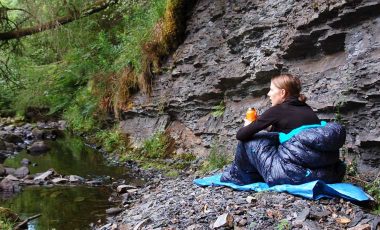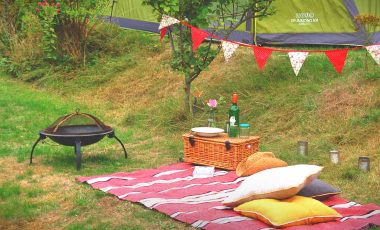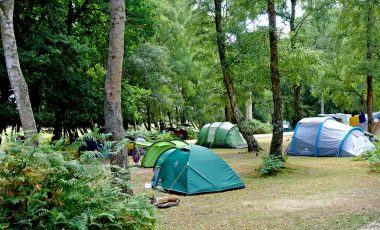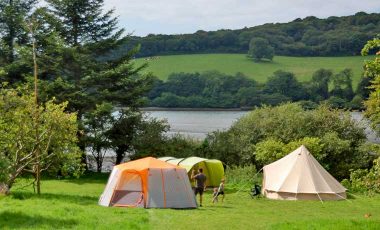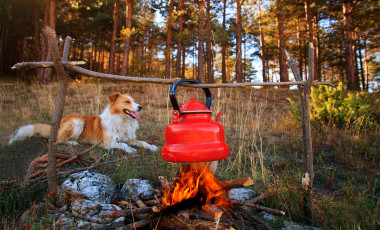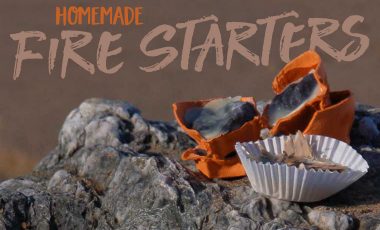There are no set rules when it comes to how, where, and why you like to camp. And even within each vague genre of camping, everyone goes about it differently. The different types of camping each enable the different types of campers to enjoy sleeping in the great outdoors in a way that suits them.
This article outlines some types of camping that you may or may not have heard of. Of perhaps you just know them by a different name? The list is certainly not definitive, just a guide to help campers understand what other types of camping scenarios are available to them, and what not to miss out on in your lifetime of wild snoozing under the stars.
7 different types of camping
As well as personal preference, some campers will choose a specific type of camping based on their location, the season and the equipment they have available to them. The cost of camping (and all its associated gear) can have an impact, too.
In no particular order, 7 different types of camping are outlined below:
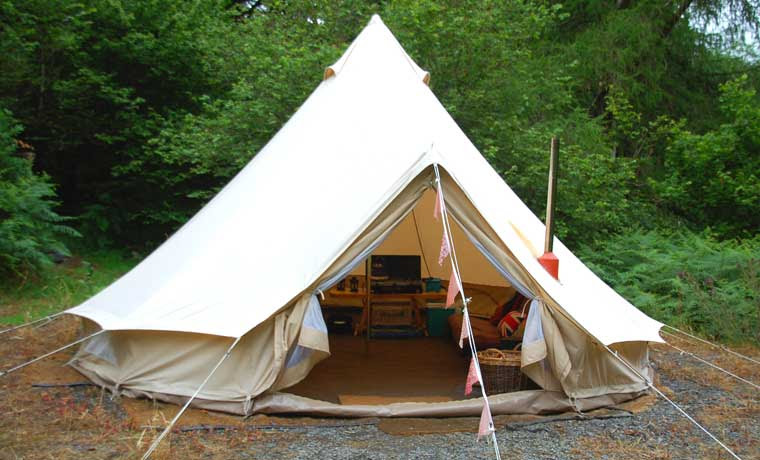
01Glamping
| Also known as: | Luxury camping, yurt camping, glamorous camping |
| Best for: | Those who enjoy camping in comfort |
| Best tent to use: | A bell tent, teepee or yurt |
| Type of gear needed: | Nothing, if you go to glamping resorts (other than a fancy pair of wellington boots!). For DIY glamping, lots of accessories and fairy lights are a must. |
Glamping is the ideal way to enjoy time in the outdoors without sacrificing comfort and luxury. As glamping has evolved, so has the way in which people go about it. Luxury glamping resorts are popping up all over the place providing top class accommodation that rivals offerings from 5 star hotels. These enable holiday makers to have all the hassle, usually associated with camping, completely taken away. Because of this, glamping can be one of the most expensive types of camping, although you don’t need to invest in any gear to make it happen.
On the other end of the glamping spectrum is DIY glamping. This is for folk who want enjoy a bit of luxury but like to create it themselves. It also means that they don’t have to pay a high premium for camping in exclusive locations. DIY glamping can be done on any campground, in the backyard, or even in the backcountry (if you’re able to get your vehicle there).
Further reading:
- What is Glamping?: An intro to glamping
- Glamping Accessories: a varied selection to add some style to your glampsite
- DIY Glamping: tips to budget glamping
- Luxury Tents: A selection of different types of glamping tents

Photo by Holly Mandarich on Unsplash
02Car camping
| Also known as: | Frontcountry camping, tent camping |
| Best for: | Families, budget campers, casual campers |
| Best tent to use: | A spacious and large family tent |
| Type of gear needed: | General camping gear |
Car camping is one of the most common types of camping. It involves packing your car to the brim with camping gear, driving as far as you like to a campground, and setting up your tent right next to your car. So simple! The beauty of car camping is that you can bring everything you could possibly need with you and are only limited by the size of your car. It’s also an inexpensive way to take a break with your family. Once you’ve invested in all your camping gear, campground costs are usually very affordable.
Further reading:
- Family Tents: a selection of large tents, plus buying advice
- Camping for Beginners: everything you need to know to get started
- Camping Checklist: a printable list for car campers
- Budget Camping Tips: ingenious ways to cut costs
- Camping with Kids: tips to survive and thrive at camp!
03Wild camping
| Also known as: | Backcountry camping, wilderness camping |
| Best for: | Backpackers, bikepackers, canoeists |
| Best tent to use: | Something super strong, lightweight and packable |
| Type of gear needed: | Lightweight, minimalist |
The term wild camping is used in a few different ways. RVers and campervaners tend to use it to describe parking up in the middle of nowhere. However, to me, wild camping is setting up a tent in the middle of nowhere! Each to their own.
Wild camping goes hand in hand with backpacking, canoe camping and bikepacking. The nature of it means that you are so far away from civilisation you have to carry all your camping gear with you. And for hikers, bikers and canoeists, camping wild opens up the possibility for long wilderness expeditions.
Wild camping gear can be costly due to its high performance and low weight. However, once you have everything you need (some of which you can rent), wild camping is totally free of charge!
Further reading:
- Backpacking Tents: a selection of our favourites, plus a buying guide
- Try Something New: Bikepacking: how to get started
- Wild Camping: Pure Freedom in the Great Outdoors: a story
04Bivvying
| Also known as: | Stealth camping, wild camping |
| Best for: | Backpackers, bikepackers, canoeists, solo adventurers |
| Best tent to use: | No tent needed! |
| Type of gear needed: | Lightweight, minimalist |
Bivvying is camping out in the wild, but without a tent! Instead, campers hunker into a bivvy bag which is essentially a waterproof sack that provides just enough protection from the elements.
Bivvying is a type of wild camping that enables campers to sleep overnight in areas where the legality of camping may be in question. The rules on wild camping vary from country to country, and it is argued that sleeping without a tent doesn’t actually count as camping. Read up on what your local rules are before you go sleeping in the middle of someones private property!
Sleeping without a tent also means that you can move on quickly and easily, and you are much more inconspicuous. Discretion is key when bivvying, as is choosing an appropriate place to camp. And the Leave Not Trace principles are more important than ever.
Cost-wise, bivvying is an even less pricey way to camp than wild camping. A decent bivvy bag costs way less that a lightweight tent. It is also smaller and lighter to carry making bivvying an excellent option for short distance bikepackers, canoe campers and backpackers.
Further reading:
- Bivvying: top tips to sleeping out in the wild without a tent
- Leave No Trace Principles Quiz: test your smarts
- Bivvying in Greece: a story
- Bivvy Sacks: a selection of our favourites, plus buying advice
05Hammock camping
| Best for: | Solo adventurers, forest camping |
| Best tent to use: | A lightweight tarp is usually used to replace a tent |
| Type of gear needed: | Lightweight, minimalist |
Hammock camping is another variation of wild camping that can be done anywhere, providing there are two things to attach your hammock to. The main benefit of hammock camping over bivvying is that you don’t have to rely upon finding flat and dry ground to set up camp. It is also more comfortable than sleeping on the hard floor with many people sleeping much better just hanging out!
Due to the lightweight nature of most modern hammocks, opting for suspended sleeping is a popular choice amongst backpackers, bikepackers and canoe campers. But this largely depends on the location and the availability of places to set up a hammock. Most hammock campers also pack a tarp that can be set up over their hammock in bad weather.
You can pay as much or as little as you like for a hammock, depending on the features (built-in bug nets, pockets, insulation etc). And many hammockers even make their own. So, like bivvying, hammock camping is another highly affordable way to enjoy camping.
Further reading:
- Hammock Camping: The Ultimate Guide: everything you need to know to get started
- Backpacking Hammocks: a selection of our favourites, plus buying advice
- Stealth Camping: how to camp discreetly in

Photo by Kevin Schmid on Unsplash
06RVing
| Also known as: | Van camping, wild camping, boondocking, dry camping |
| Best for: | Travellers, retired-folk, couples |
| Type of gear needed: | General camping gear (but with a bit more luxury and style!) |
Camping in an RV or campervan is the ultimate way to have total freedom to travel and enjoy time in the wild. It is also an excellent option for those who live in colder/less clement climates.
Many RVers only ever camp in campgrounds. This enables them to hook-up to the electrics, water and waste pipes ensuring they have all the comforts of staying in a small apartment.
However, many van campers and RVers prefer taking to the road and parking up in the middle of nowhere to camp. This is known as wild camping, boondocking or dry camping. It relies on living with only the electrics provided by built-in generators or batteries. But this style of van and RV camping cuts costs right down and enables greater freedom to travel.
Obviously, buying an RV or campervan is a sizeable investment. It’s also an excellent way for camping fanatics to have a more comfortable camping experience in their later years.
Further reading:
- Gone with the Wynns: an RVing blog
- Always on the Road: a van life blog
- Roof Top Tents: an alternative to van life

07Winter camping
| Best for: | Hunters, camping obsessed and hardy folk! |
| Best tent to use: | Steep-sided, strong, stove-compatible |
| Type of gear needed: | Warm stuff! |
Winter camping is a fairly general term that can include all of the above types of camping, just in really cold conditions! However, winter camping does require a whole other set of skills and specific knowledge to ensure that the experience is enjoyable, and not just a survival exercise.
For most folk, winter camping involves snow. And so to deal with the added challenges that snow poses on living out in the wild, much of your time winter camping will involve managing the elements. Keeping warm being number 1! Digging out snow holes, collecting and chopping firewood, tending to the fire, keeping hot water bubbling and cooking great food is all part of the winter camping experience. As is clearing snow and managing your your camping area.
Some campgrounds are open year-round making things a little easier. That said, many people go winter camping in the backcountry, making it another low cost option. From a cost point of view, winter tents and cold weather gear tend to be more pricey than 3-season gear.
Further reading:
- Winter Camping Tips: a guide to surviving (and enjoying it!)
- Cold Weather Tents: a selection of different types of winter tents
- How to Stay Warm When Camping: tips to keep your toes (and everything else) toastie
As mentioned, the above types of camping are by no means set in stone and the list is certainly not definitive. However, for those new to the camping world it’s important to know what your options are to help figure out which route you would like to go down. And for those who are set in their current camping ways, maybe it’s time to branch out and try and different style of camping?!
Whichever type of camping you love, may you have a happy time enjoying the peace, simplicity and calm that it brings.


